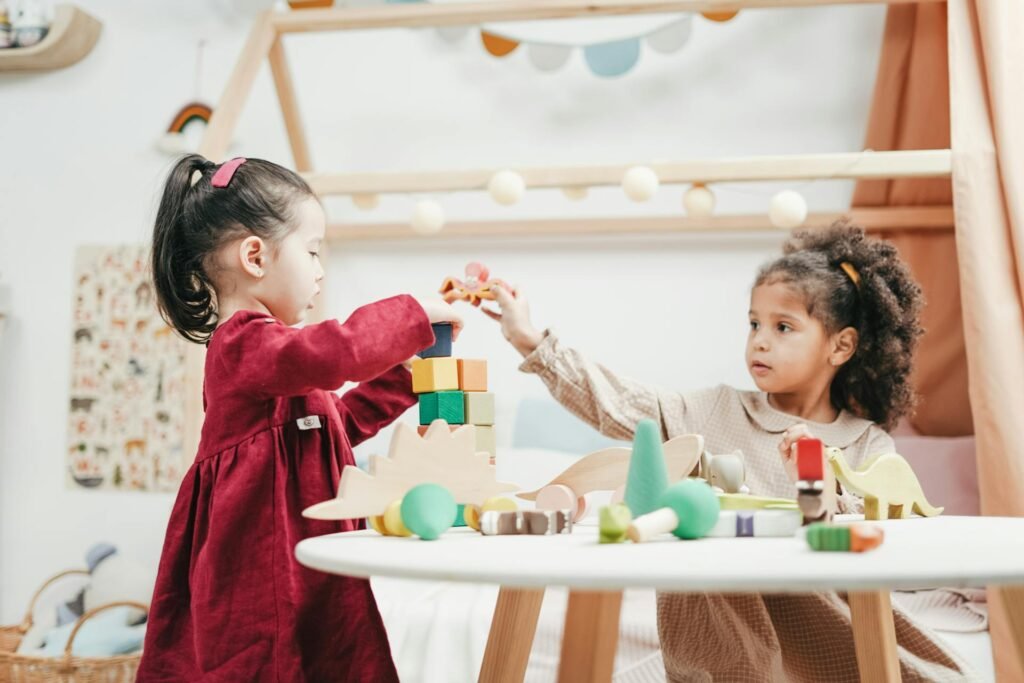Effectiveness of play-based learning methods
Understanding Play-Based Learning Play-based learning is an educational approach that emphasizes the utilization of play as a vital component of the learning process. This methodology is grounded in the understanding that children learn best through exploration and interaction with their surroundings. By engaging in various forms of play, children can gain insights, develop skills, and foster relationships with their peers. Such an approach recognizes play not simply as a leisure activity but as a significant avenue for cognitive, social, emotional, and physical development. At its core, play-based learning operates on several key principles. It prioritizes child-led exploration, allowing children to choose activities that pique their interests. This autonomy enhances motivation and engagement, leading to deeper learning experiences. Moreover, collaborative play encourages social interaction, where children learn invaluable communication skills and the art of negotiation while working together in group settings. This can ultimately facilitate the development of empathy and emotional regulation. Different types of play characterize this learning model, notably free play and guided play. Free play refers to unstructured, spontaneous play, where children utilize their imagination to navigate tasks. Such play can range from building with blocks to role-playing everyday scenarios. In contrast, guided play entails a more intentional approach from educators or caregivers, who introduce specific concepts or material while allowing room for exploration and creativity. This combination supports various developmental milestones, as it caters to children’s innate curiosity while still providing a framework for learning. Overall, understanding play-based learning underscores its significance in early childhood education. By facilitating diverse play experiences, caregivers and educators can foster an enriching environment that nurtures holistic development in children, preparing them for future academic endeavors and personal growth. Benefits of Play-Based Learning Play-based learning has emerged as a significant pedagogical approach in early childhood education, offering a myriad of benefits that extend across various developmental domains. One of the most profound advantages of play-based learning is its impact on cognitive development. Children engage in imaginative play, problem-solving scenarios, and structured games, which cumulatively foster critical thinking and enhance their ability to process information effectively. Research has shown that children who participate in play-based activities often outperform their peers in standardized assessments, indicating a correlation between play and improved academic readiness. In addition to cognitive enhancements, play-based learning plays a vital role in social development. When children interact during play, they learn essential skills such as cooperation, negotiation, and teamwork. These interactions not only promote friendships but also instill empathy as children learn to understand and respond to the feelings of others. A study published in the Journal of Early Childhood Research highlights that children engaged in cooperative play demonstrate higher levels of social competence and conflict resolution skills, which are integral for successful interpersonal relationships throughout life. Moreover, play-based learning significantly contributes to emotional development. Through play, children explore their feelings and express themselves in a safe environment, which aids in emotional regulation. This form of learning provides opportunities for risk-taking, helping children to build resilience and independence. Furthermore, research demonstrates that play-based learning reduces anxiety and enhances self-esteem, illustrating its positive implications for mental health in early years. Lastly, physical benefits associated with play-based learning cannot be overlooked. Engaging in interactive play promotes gross and fine motor skills, contributing to overall physical fitness. Activities such as climbing, running, and crafting help children develop strength, coordination, and dexterity. Overall, the multi-faceted benefits of play-based learning underscore its effectiveness as a method for nurturing comprehensive growth during early childhood. Implementing Play-Based Learning in Early Childhood Education Implementing play-based learning in early childhood education necessitates a multifaceted approach that enriches the learning environment while accommodating various developmental needs. One effective strategy is to create enriching play environments that foster children’s natural curiosity and creativity. This can be done by designing spaces with diverse materials, including blocks, art supplies, and sensory bins, allowing children to engage in self-directed exploration. Such environments encourage open-ended play, which is essential for cognitive and social development. Another practical approach is the setup of thematic play areas. These areas can reflect various themes relevant to the children’s interests or the curriculum, such as a mini-veterinary clinic, a grocery store, or a construction zone. By providing contextually relevant play experiences, educators can stimulate children’s imaginations and facilitate connections to real-world concepts. For instance, a dramatic play area mimicking a restaurant can help children learn about food, health, and interpersonal skills, enhancing both their language and social abilities. Furthermore, facilitating guided play experiences ensures that educators maintain a balance between child-led and adult-supported activities. In guided play, educators can strategically introduce learning goals while allowing children to explore and discover independently. This method could involve asking open-ended questions or suggesting new ideas that extend the play narrative, thereby enriching the educational experience without undermining the play’s intrinsic value. However, challenges may arise when integrating play-based methods into structured curricula. Educators may struggle with finding the right balance between directed learning activities and free play. Continuous professional development can provide teachers with the necessary strategies to navigate this balance. By fostering a culture that values play alongside academic achievement, early childhood education settings can successfully implement play-based learning, ultimately benefiting children’s holistic development. Real-Life Examples and Case Studies Numerous early childhood education programs across the globe have embraced play-based learning methods, demonstrating their remarkable impact on children’s development. One prominent case is the Reggio Emilia approach, originating from Italy, which emphasizes child-led exploration and learning through play. In various Reggio Emilia-inspired classrooms, educators have reported improved engagement levels and enhanced critical thinking skills among children. Through project-based learning workshops, students explore topics of interest, allowing them to express creativity while developing cognitive abilities. In Australia, the implementation of play-based approaches in kindergarten settings has yielded positive results. A study conducted by the Australian Institute for Teaching and School Leadership highlighted that children participating in play-based learning showed increased social skills and emotional resilience. Teachers observed that these children interacted more positively with peers, learning to negotiate roles and collaborate during play






